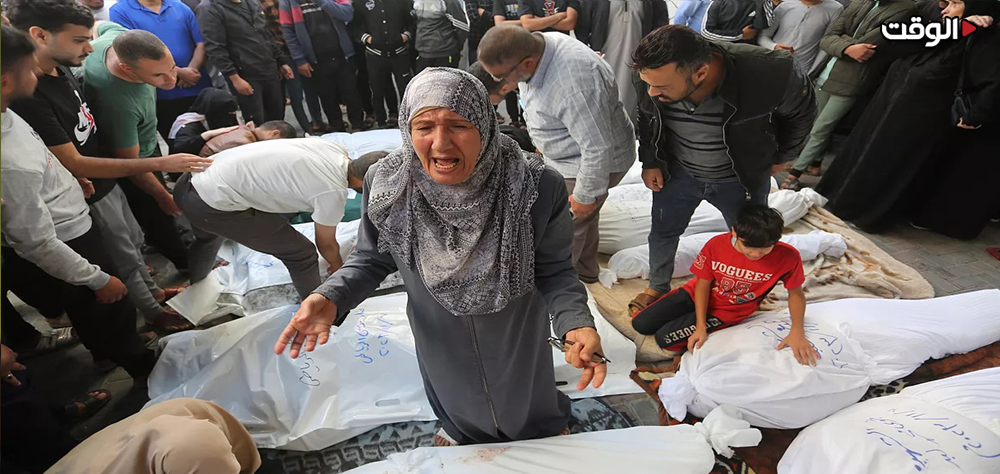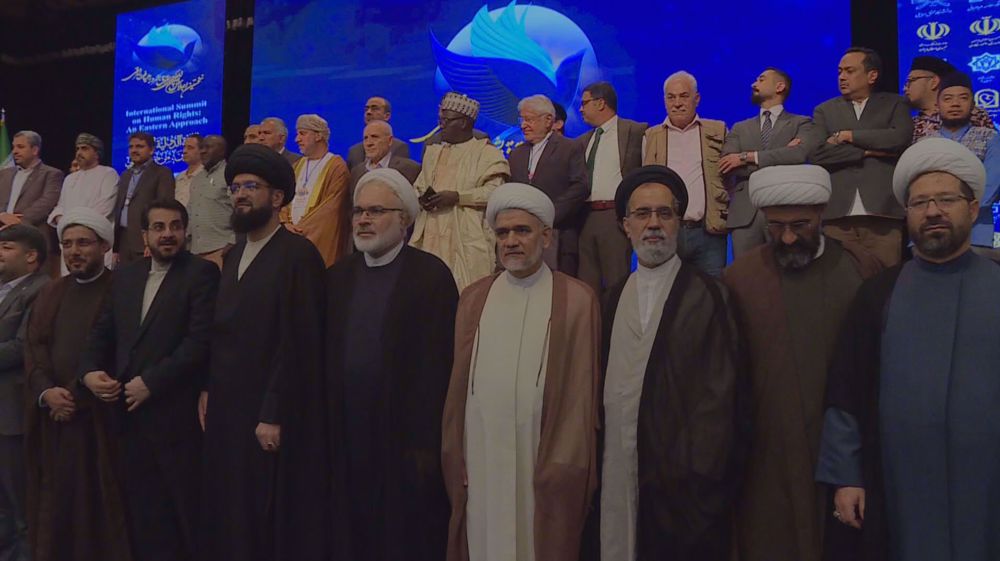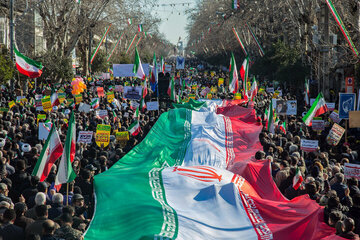Amid international concerns about the severe food crisis and the imminent threat of widespread famine and hunger in Gaza, numerous individuals, including officials from the United Nations, describe the unfolding of this situation as a deliberate act by Zionists aimed at collectively punishing over 2 million Gaza residents.
ALWAGHT- Following the initiation of attacks in Gaza since October 7th, a multitude of reports shedding light on the gravity of the humanitarian crisis in Gaza have been released by United Nations officials. According to Anadolu Agency, since the outbreak of the conflict, 1.9 million individuals have been displaced from their homes, with the Rafah area becoming the primary haven for refugees.
Addressing this matter, Juliette Touma, the communications director of UNRWA, penned a message on the X social network, underscoring the dire humanitarian conditions in the Gaza Strip: UN shelters are overwhelmed, with no additional space for more refugees. In the southernmost part of the Gaza Strip, specifically Rafah, there are no civilian infrastructures to aid this displaced populace, leading to the majority of civilians resorting to sleeping on the streets.
People in Gaza are consuming livestock fodder
The famine and food crisis have reached a point where, as reported by Euro News, residents of Gaza are now turning to their animal feed for nutrition.
A resident of the Jabalia refugee camp mentioned that white flour has completely disappeared from the markets, leaving only corn flour available.
Furthermore, the source explained that they used to grind rice, but due to rising prices, they have shifted to producing flour from corn and barley that is used for feeding livestock.
According to certain Palestinian sources, despite medical alerts regarding the health implications and unpalatable taste of consuming this flour, the practice has become widespread.
Following the withdrawal of the Zionist regime's army from northern Gaza, Palestinian civilians accessed livestock feed warehouses, temporarily easing the hunger crisis for a brief period. They resorted to producing substandard flour from barley, corn, lentils, and even bird and cat feed in an attempt to mimic flour. However, this brief respite vanished swiftly due to the widespread hunger crisis in Gaza.
The severe blockade imposed by Israel on Gaza has resulted in the reduction of both water and food supplies. UN officials indicate that one-quarter of Gaza's 2.3 million residents are now grappling with famine.
Michael Fakhri, the UN Special Rapporteur on the Right to Food, highlighted in a press conference that famine has become an inevitable reality in Gaza following the suspension of funding for The United Nations Relief and Works Agency for Palestine Refugees (UNRWA) by certain countries.
Fakhri emphasized that discontinuing support for UNRWA amounts to abandoning 2.2 million Palestinians to starvation.
The United States, Canada, Australia, Italy, the United Kingdom, Finland, Germany, the Netherlands, France, Switzerland, Japan, and Austria are among the nations that have halted their financial contributions to UNRWA.
Health alerts due to the spread of illness and the lack of drinking water
It's important to note that the lack of clean drinking water and polluted surroundings has caused individuals in Gaza to experience a range of infectious and non- infectious illnesses, some of which they might not even realize they have contracted. In a recent report, the Palestinian news agency, Sama, highlighted that the Ministry of Health in Gaza revealed over 700,000 refugees have been impacted by diseases including contagious, skin-related, respiratory, diarrheal, and hepatitis diseases.
The ministry has highlighted that overcrowding, inadequate shelter, insufficient provisions of food and water, and the absence of medical and sanitation facilities worsen the humanitarian and health crisis. "Tedros Adhanom Ghebreyesus," Director-General of the World Health Organization, strongly denounced the repulsive actions of the Zionist regime against Gaza's Palestinian population, describing the conditions in the region as unimaginable and hellish, and remarking, "So many deaths for yet another ceasefire is unacceptable." On Monday, January 29th, the Palestinian Ministry of Health in Gaza reported that the number of Gaza martyrs has surpassed 26,000 since the war's onset, with over 65,000 injured.
Gaza is now in its fourth month of conflict, during which 60 percent of its hospitals have been destroyed by Israeli airstrikes. This follows Deutsche Welle's report, a month after the Gaza war began, that the International Red Cross Committee had appealed for an end to hospital destruction in the region, noting that attacks on Gaza medical facilities have severely undermined the region's healthcare infrastructure, pushing it beyond recovery. The Red Cross has urged for an immediate cessation of assaults on Gaza hospitals.
Between two to three million Palestinians have fled their residences in this region, with hundreds of thousands seeking refuge in United Nations-operated schools converted into shelters or finding sanctuary alongside thousands of injured in hospitals. Recent Israeli assaults have approached several hospitals in the north, causing concern among medical professionals.
Euro News additionally reports that Doctors of the World International Network (MDM) has declared that Gaza's medical practitioners are compelled to conduct surgeries on the ground and perform cesarean sections on women and amputations on children without anesthesia due to medication shortages. This NGO also cautioned that amid Israel's relentless attacks, there will be a gradual rise in infant mortality rates. Jean-François Corty, MDM’s deputy, stated his apprehension on RTL radio, suggesting that the situation in the besieged area might become "critical" in the "long-term perspective." Since October 9th, the Zionist regime has enforced a complete blockade on Gaza, depriving two million residents of water, food, and electricity.
Euro News also highlights the plight of refugees, stating that Israeli airstrikes have reduced residential buildings in Gaza to rubble. On Tuesday, Israeli airstrikes demolished apartment buildings in a refugee camp near Gaza City, leaving voids where they once stood, while Israeli forces targeted underground complexes.
Gaza officials have reported that a minimum of six Israeli airstrikes destroyed several apartment blocks in a residential zone on the outskirts of Gaza City near the Jabalia refugee camp. While the organization has acknowledged a significant number of casualties, it has refrained from presenting additional details.
Video footage distributed by Al Jazeera television depicts at least four substantial craters in the area where buildings once stood, amidst a vast expanse of rubble surrounded by partially collapsed structures. Numerous rescue personnel and onlookers sifted through the wreckage, trying to locate survivors trapped beneath the collapsed structures.
The devastation in northern Gaza and the ongoing assaults in southern Gaza orchestrated by the Zionist regime, intended as collective punishment, have encountered setbacks. Robert A. Pape, a professor of political science and the director of the Security and Threats program at the University of Chicago, comments in a section for Foreign Affairs: "As Israeli forces continue their advancements in southern Gaza, the precise objective of this Israeli strategy remains somewhat unclear."
The expert suggests that while Israeli leaders assert, they target Hamas exclusively, the lack of clarity prompts doubts about the government's actions. They question if Israel's eagerness to weaken Gaza reflects the same ineffectiveness that led to the military's failure against Hamas in October 7th's attack, plans known to Israeli military and intelligence over a year ago? They inquire if the destruction of northern and southern Gaza is a prelude to relocating the population to Egypt, as suggested in a 'conceptual study' by the Israeli Ministry of Information.
The University of Chicago professor contends that irrespective of the objective, Israel's wholesale devastation of Gaza poses significant moral concerns. From a strategic viewpoint, Israel's method is destined to fail—it already has. The extensive punishment of Gaza's civilians hasn't swayed support from Hamas but rather incited Palestinian resentment. Additionally, the campaign hasn't eradicated the intended group. Over fifty days of conflict illustrate that while Israel can devastate Gaza, it cannot eliminate Hamas; indeed, the group may emerge stronger.
Conclusion
It can be stated that refugee lives are no longer secure within the camps. The Zionist regime, unmoved by the dire circumstances faced by refugees and their growing numbers, has exhibited no compassion even towards the temporary refugee facilities, subjecting them to assaults. Witnesses in the Al-Maghazi refugee camp describe how numerous inhabitants are being deliberately targeted by Zionist soldiers at close range with apparent composure. Over the recent days, additional lives have been lost, and many more have sustained injuries in this camp. Ambulances face obstacles moving through the damaged roads and infrastructure to recover the bodies.



























